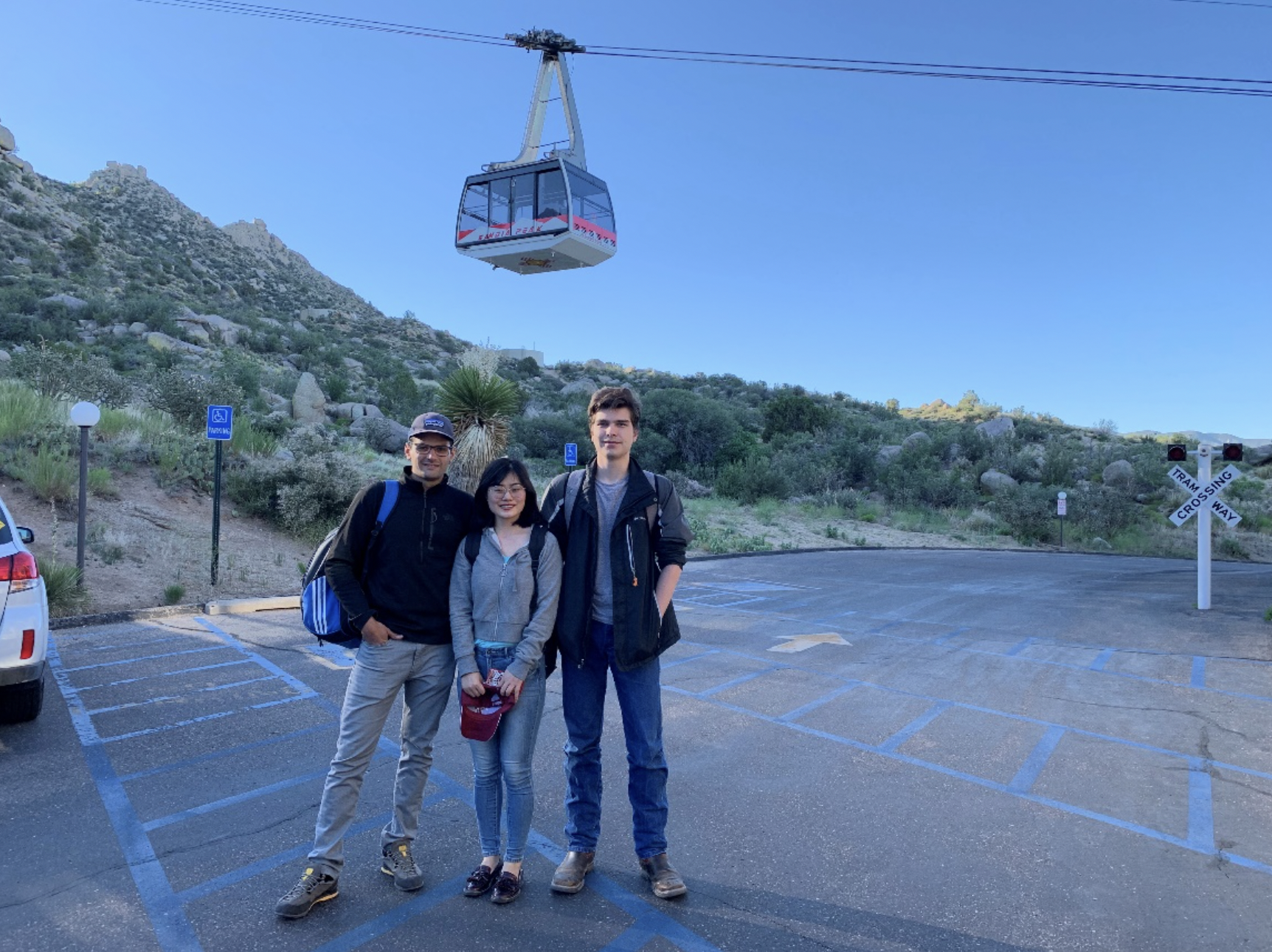Recent News
Grant Rudnick named Breece Award recipient
December 2, 2025
UNM wins demo award at International Workshop in Structural Health Monitoring
December 2, 2025
Ferenchak named chair of Transportation Research Board Pedestrian Committee
October 31, 2025
Ferenchak named APBP 2025 Research Professional of the Year
October 1, 2025
News Archives
UNM researchers install wireless sensors on Sandia Peak to collect data
June 18, 2019 - by Kim Delker

The research team at Sandia Peak Tramway: Rafa Cardona, Xinxing Yuan and John W. Hanson.
On June 12, researchers from The University of New Mexico School of Engineering installed two wireless sensors on top of Sandia Peak in collaboration with Sandia Peak Tramway.
Fernando Moreu, assistant professor in the Department of Civil, Construction and Environmental Engineering, said the team is using the smart sensing technology they develop to quantify the performance of a real structure. The goal of the research is to collect accelerations, angles, and displacements of both the towers and the cars under different performance conditions.
The results of this collaboration with the Tramway will assist researchers to improve SHM algorithms, their structural engineering skills, and abilities to build sensors.
The research team is part of the Smart Management of Infrastructure Laboratory (SMILab), under the supervision of Moreu, and includes Rafael Cardona (a visiting scholar from the University of Castilla la Mancha in Ciudad Real, Spain), Xinxing Yuan (a Ph.D. student in UNM) and John W. Hanson (a senior in computer science at CNM).
SMILab aims to contribute to advance fundamental research on cyber-physical systems, wireless communication, machine learning, and smart and connected communities using intelligent data to inform decisions.
Moreu said that two sensors were mounted on the structure — one of them in the car and the second one in the tower.
“These sensors have the capacity to record data for several weeks, thanks to a solar-energy harvesting system. The sensors are waterproof and are connected to the structures with strong magnets that can resist heavy wind and would also work in the winter,” he said.
He said that wireless sensing technology is a cost-efficient method to collect various parameters and information needed on areas such as industrial buildings, transportation systems, aerospace, defense, automation and more.
“The SMILab is interested in designing new sensing technologies to collect information from real structures, transportation systems, and inform cost-effective operations based on data,” he said. “Only by understanding sensing technology can researchers choose which type of data to collect, how to collect it, and how to use it.”

Moreu’s team has filed several patents for the Low-Cost Efficient Wireless Intelligent Sensor (LEWIS), which spearheaded this generation of smart sensors. The sensors installed at the Tramway are LEWIS 4, which has been the master’s thesis subject of Rafael Cardona. Cardona worked with other SMILab members for several months in the design of LEWIS4, including Marlon Aguero and Dilendra Maharjan, and Ali Ozdagli, inventor of LEWIS1. Cardona tested LEWIS4 using shake tables in the structures laboratory at UNM, recording non-stop data for several days at the Center for Advanced Research Computing, exposing it to rain at his apartment’s balcony, and iterating both software and hardware until the perfect sensor was ready for field deployment.
They have been working together with the Tramway managers for three years, including teaching structural dynamics and signal processing to graduate students, structural steel design to undergraduate students, and how to build a sensor to high school students as part of the Summer Transportation Institute in the School of Engineering.
“The Tramway is a unique and excellent testbed to perform structural health monitoring, validating the wireless sensors designed and fabricated by SMILab in Albuquerque,” Moreu said.
Moreu said there is a patent pending at UNM for the technology.
This research has been partially supported by the New Mexico Consortium; the Transportation Consortium of South-Central States (Tran-SET), a Region 6 University Transportation Center; the Department of Civil, Construction and Environmental Engineering at UNM; and the Department of Civil Engineering at University of Castilla La Mancha (Spain). The strong support from the Tramway Sandia Peak team and their staff made this collaboration possible for UNM and CNM students.
